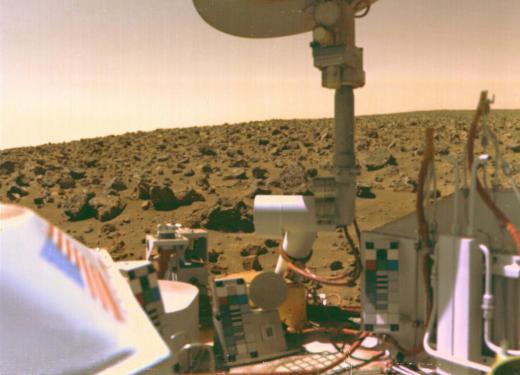What is the Mars Climate Like?
The climate and weather conditions on Mars are very different from those of Earth. One reason for this is that Mars is about one and a half times farther from the Sun than is Earth. Another reason for the difference in climate is that Mars is much smaller than the Earth, and the diameter at the equator of Mars is around half the size of that of the Earth. As a result of these factors, the temperature of the Mars climate is relatively cold, and the average temperature is -80°F (about -60°C.) The poles of Mars are the coldest when they reach a low temperature of -195°F (-125°C) while the temperature at the equator can reach as high as 70°F (20°C.)
The temperature on the surface of Mars varies based on what the altitude is along with the time of the day. Another contributing factor is when the atmosphere contains more dust particles than usual, which absorb sunlight and transfer heat to the atmosphere. The gases of the atmosphere on Mars are mostly comprised of carbon dioxide, which makes up 95.3 percent of the atmosphere. The remaining gases vary, and the atmosphere of Mars actually contains very little oxygen compared to Earth. The carbon dioxide of the Mars climate freezes into thin clouds at high altitudes, and in the morning, haze and fog are often created from water ice due to the low temperatures.

The Mars climate contains wind patterns that occur over the whole planet and are caused by differences in the way the atmosphere gets heated from the Sun at high and low latitudes. The results are winds that are relatively calm, having speeds on average of around 6 miles (10 kilometers) per hour. There have been winds on Mars that have been observed as fast as 55 miles (90 kilometers) per hour, but since the atmosphere isn’t very dense, these winds do not exert very much force.

These winds can have some interesting effects on the Mars climate, creating dust storms and tornadoes, known as dust devils, as dust from the surface is lifted into the atmosphere. When this dust gets warm from the sun, stronger winds are formed, more dust gets picked up and heated, and the process continues to cause the storm to grow even larger. The size of these storms can vary anywhere between a few miles or kilometers in diameter all the way up to dust storms that can cover the entire planet. Dust storms occur more often when Mars is closest to the sun and the atmosphere gets the warmest. The seasons on Mars last twice as long as Earth seasons because Mars takes about twice as long to orbit the sun.
AS FEATURED ON:
AS FEATURED ON:













Discussion Comments
Mars is more important than Venus, because Venus is basically impossible to land on. The atmosphere is highly toxic and very hot. This is why we focus on exploring Mars and understanding ways that life could flourish there. Mars is also very dangerous, but not nearly as dangerous as Venus, which is impossible.
@TrogJoe19
I think we have discovered ice on Mars, so that is a strong indicator that there is already life there. Soon, we will likely discover more life and realize that we are far from alone in this universe.
The size of Mars indicates that we could possible reconstruct an earth like environment there, even though it would be improbable that life exists there independently. The winds and the atmosphere could be tamed over a gradual process of human engineering and life construction on a gradual scale. First, we'd have to make a lot of advancements in DNA manipulation here on earth.
Post your comments